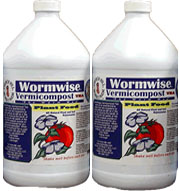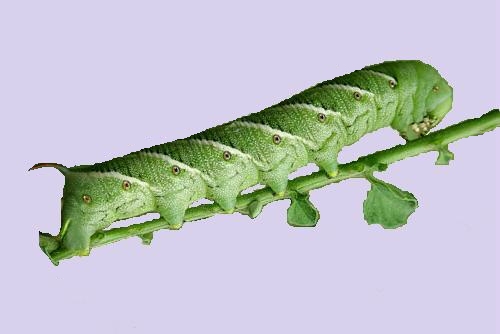Part of being a Garden Professor is evaluating, interpreting, and passing on good science to the rest of the gardening world. I was recently made aware of two articles soon to be published in Crop Protection and Pedobiologia, both peer-reviewed, scientific journals. (You can download these articles just by clicking on the highlighted journal names.)
Briefly, what one expects from a scientific article is (1) a statement of the research question (the hypothesis) to be investigated, (2) a clear description of the materials used and procedures followed, (3) a listing of the results, along with their statistical significance, and (4) a discussion of the results, including whether they supported the hypothesis.


Both articles focus on the use of vermicompost teas as a way of reducing pest damage on greenhouse grown crops. If you’re not familiar with this product, it’s made using worm castings and water in an aerated system. The researchers conducted one large experiment and divided the results into two parts for publication. Therefore, the materials and procedures were the same for both articles, and you’ll also see that the conclusions are likewise the same. (My point – you really only need to read one of these articles.)


I sent these articles and my evaluations to my GP colleagues; at least two of us will be sending letters to the editors of both journals expressing our concerns. Jeff thought these articles provided a great opportunity for our blog readers to look over our shoulders and see what we do. We don’t question the results that the investigators got, nor do we have any argument with the statistical analysis. We do question the authors’ interpretation of the results.
So here is your assignment for the weekend:
(1) Read the methods section carefully to understand the differences between the treatments (the vermicompost tea addition) and the control. Can you think of an alternative reason for the results the researchers found?
2) What additional flaw do you see in the discussion section in terms of the proposed mechanism of protection conferred by the vermicompost tea treatment?
On Monday, I’ll post the draft of the letter that we’ve drafted to the journals.
Oh, and if you have any questions, please post them! We will answer them the best we can.
Hi Lynda. I read the ‘Edwards Crop Protection’ article. My responses to your questions are as follows: (1) “plants in cages were placed on capillary mats for ease and uniformity of watering without removing the cage, either with Peter’s Nutrient
Solution, providing all the required nutrients, or watering with only
water for irrigation, according to the experimental protocol
designated. ” Are they saying they only applied Peter’s to the treatments that used the vermicompost drench, and not the control, which only used deionized water? If so, I’d say that’s a confound, seeing as the application of the liquid feed isn’t constant between the control and different treatments. How would they know it’s the compost tea having the effect and not the liquid fertilizer they’re applying? Also, the small amounts of N:P:K in the vermicompost tea (1.3%:2.7%:9.2%) could also account for the increases in dry weights observed at the end of the experiment, especially considering the drenches were applied at increasing concentrations of vermicompost between treatments. (2) In the discussion they state that vermicomposts have increased microbial activity in comparison to thermophilic methods of composting. Hasn’t this been shown to be untrue? Their dicussion of phenolic compounds is all good and well. But my question is if the literature is so adamant that the phenols in vermicomposts might be responsible for insect pest suppression, why didn’t they test for phenolic concentrations in their experiment? I might be way off, but I thought I’d give it a go, seeing as no one else has! I don’t want any of the Garden Professors thinking their work isn’t appreciated! 😉
I had the same question as Jimbo and one additional question. The food source for the worms was listed as grocery store produce. Could there possibly be some residual pesticides that ended up in the vermicompost tea?